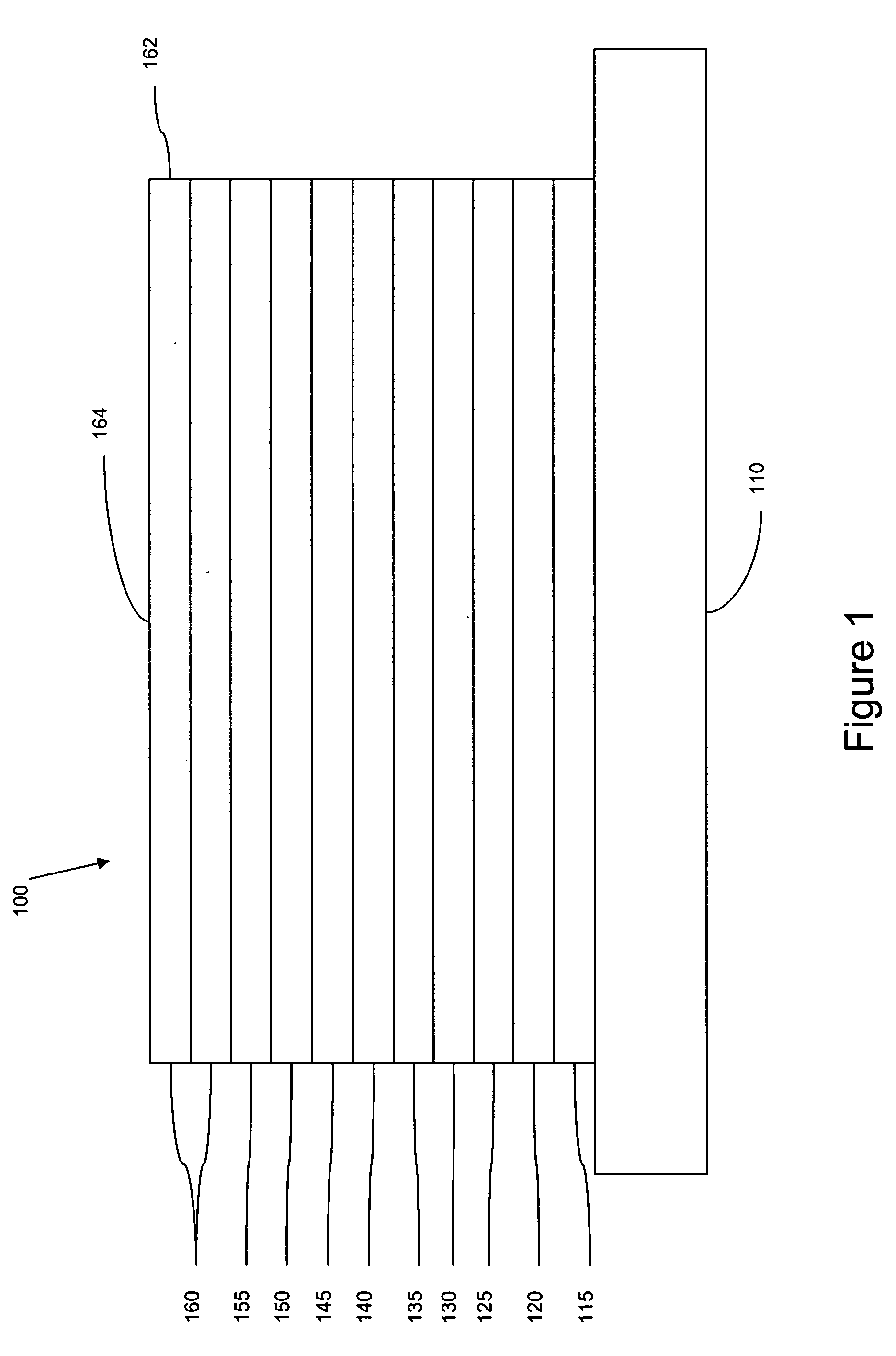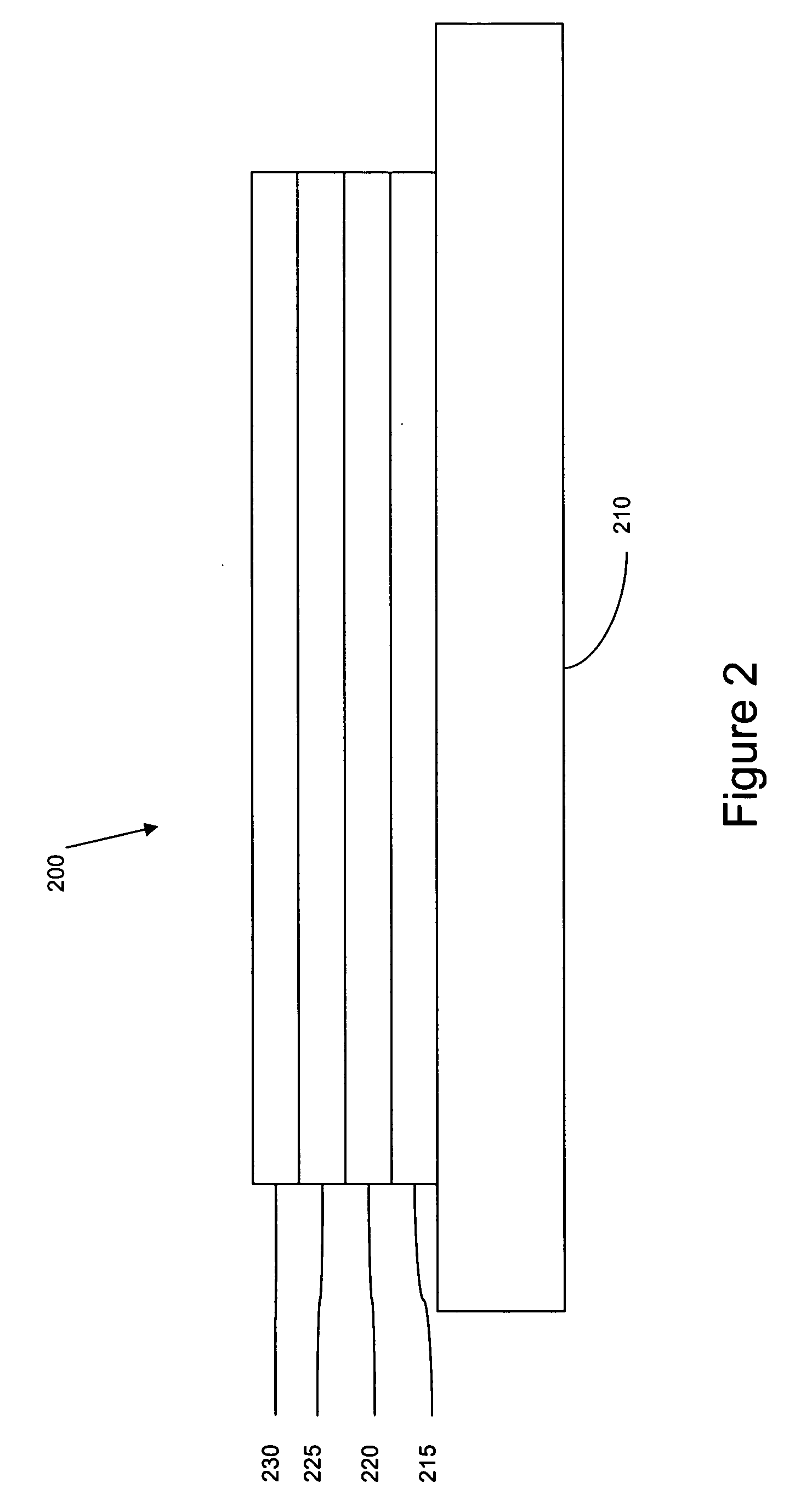Cyclometallated iridium carbene complexes for use as hosts
a carbene metal complex and carbene metal technology, applied in the field of organic light emitting devices, can solve the problems of not being sufficiently stable for commercial devices, not well known applications of carbene ligands in photochemistry, and existing compounds not including compounds that are stable emitters. achieve the effect of stable manner
- Summary
- Abstract
- Description
- Claims
- Application Information
AI Technical Summary
Benefits of technology
Problems solved by technology
Method used
Image
Examples
example 1
[0096] The organic stack consisted of sequentially, from the ITO surface, 100 Å thick of copper phthalocyanine (CuPc) as the hole injection layer (HIL), 300 Å of 4,4′-bis[N-(1-naphthyl)-N-phenylamino]biphenyl (α-NPD), as the hole transporting layer (HTL), 300 Å of Ir(bmi)3 doped with 6 wt % of Ir(4,6-F2ppy) as the emissive layer (EML), 400 Å of aluminum(III)bis(2-methyl-8-hydroxyquinolinato)4-phenylphenolate (BAlq) as the ETL2. There was no ETL1.
example 2
[0097] The organic stack consisted of sequentially, from the ITO surface, 100 Å thick of copper phthalocyanine (CuPc) as the hole injection layer (HIL), 300 Å of 4,4′-bis[N-(1-naphthyl)-N-phenylamino]biphenyl (α-NPD), as the hole transporting layer (HTL), 300 Å of Ir(bmi)3 doped with 6 wt % of Ir(F2ppy) as the emissive layer (EML), and 100 Å of 2,3,6,7,10,11-hexaphenyltriphenylene (HPT) as the ETL2, and 400 Å of aluminum(III)bis(2-methyl-8-hydroxyquinolinato)4-phenylphenolate (BAlq) as the ETL1.
[0098]FIG. 3 shows plots of the current density vs. voltage for device Examples 1 and 2. FIG. 4 shows plots of the quantum efficiency vs. current density for device Examples 1 and 2. FIG. 5 shows plots of the electroluminescent spectra for device Examples 1 and 2.
example 3
[0099] The organic stack consisted of sequentially, from the ITO surface, 100 Å thick of copper phthalocyanine (CuPc) as the hole injection layer (HIL), 300 Å of 4,4′-bis[N-(1-naphthyl)-N-phenylamino]biphenyl (α-NPD), as the hole transporting layer (HTL), 300 Å of Ir(bmi)3 doped with 6 wt % of Ir(5-phppy) as the emissive layer (EML), and 100 Å of aluminum(III)bis(2-methyl-8-hydroxyquinolinato)4-phenylphenolate (BAlq), and 400 Å of tris(8-hydroxyquinolinato)aluminum (Alq3) as the ETL1.
PUM
| Property | Measurement | Unit |
|---|---|---|
| Energy | aaaaa | aaaaa |
| Structure | aaaaa | aaaaa |
Abstract
Description
Claims
Application Information
 Login to View More
Login to View More - R&D
- Intellectual Property
- Life Sciences
- Materials
- Tech Scout
- Unparalleled Data Quality
- Higher Quality Content
- 60% Fewer Hallucinations
Browse by: Latest US Patents, China's latest patents, Technical Efficacy Thesaurus, Application Domain, Technology Topic, Popular Technical Reports.
© 2025 PatSnap. All rights reserved.Legal|Privacy policy|Modern Slavery Act Transparency Statement|Sitemap|About US| Contact US: help@patsnap.com



